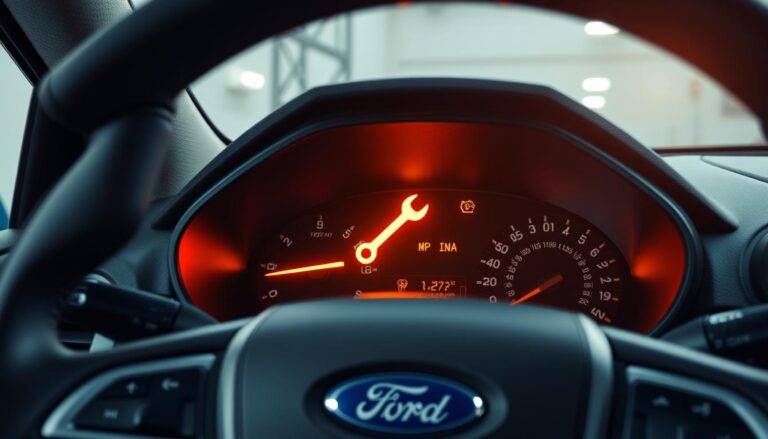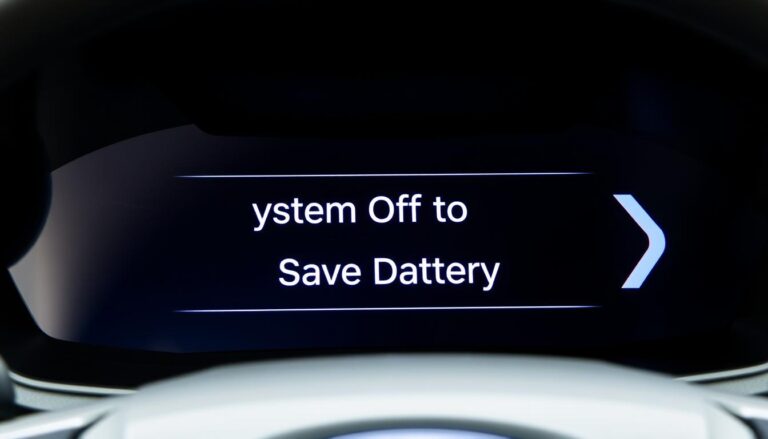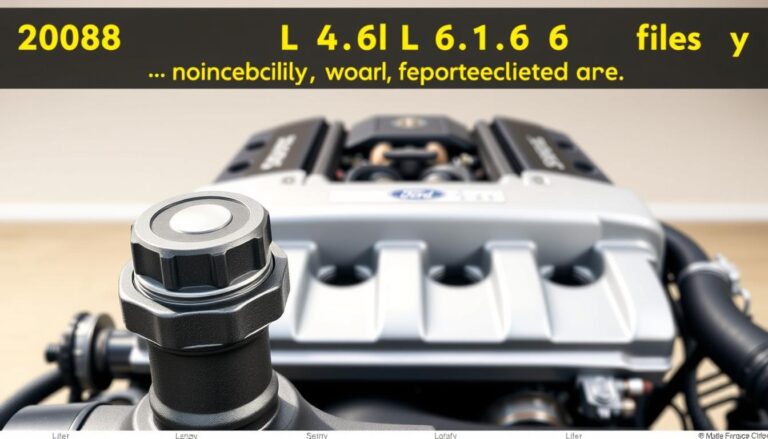Maintaining your vehicle’s battery is paramount for its performance and longevity. For Ford Transit proprietors, accessing the battery poses a challenge, yet it is an indispensable task for routine maintenance. This article aims to elucidate the process of accessing your Ford Transit’s battery, facilitating DIY checks and maintenance with utmost ease.
Grasping DIY maintenance for your vehicle can significantly reduce both time and financial expenditure. By mastering the technique of accessing the battery, you will be adept at handling routine inspections and repairs, thus ensuring your Ford Transit operates optimally.
Key Takeaways
- Understand the importance of battery maintenance for your Ford Transit.
- Learn the steps to access the battery safely.
- Discover DIY maintenance tips for your vehicle.
- Improve your overall knowledge of Ford Transit maintenance.
- Save time and money by performing routine checks yourself.
Understanding Your Ford Transit Battery
Acquaintance with the specifications and location of your Ford Transit battery is paramount for enhancing your vehicle’s dependability. The battery, a pivotal component, energizes the vehicle’s electrical system, guaranteeing the seamless operation of all critical functions.
Battery Specifications for Different Transit Models
The specifications of Ford Transit batteries fluctuate across various models, influenced by engine type, model year, and trim level. For example, diesel models necessitate more robust batteries compared to their gasoline counterparts.
| Model Year | Engine Type | Battery Specification |
|---|---|---|
| 2014-2019 | Diesel | Group 94R |
| 2020+ | Gasoline | Group 65 |
Why Battery Location Knowledge is Essential
Comprehension of your Ford Transit battery’s location is crucial for both emergency scenarios and routine maintenance.
Emergency Situations
In the face of a breakdown, the ability to swiftly locate the battery facilitates a rapid jump-start or, if required, a battery replacement.
Regular Maintenance Benefits
Consistent battery checks and maintenance can avert unexpected failures and extend its operational life. Adherence to proper maintenance practices, such as terminal cleaning and ensuring secure connections, is imperative.

Tools and Equipment Needed
To access the Ford Transit battery safely, it’s crucial to have the right tools and equipment. Proper preparation not only ensures your safety but also makes the process more efficient.
Basic Hand Tools Required
For most Ford Transit models, you’ll need basic hand tools for battery access. These typically include a socket set, wrenches, and pliers. Having tools for Ford Transit maintenance within easy reach can streamline the process.
- Socket set
- Wrenches
- Pliers
Optional Specialized Equipment
Depending on your Ford Transit’s model year and configuration, you might need specialized tools. These can include a trim removal tool or a battery terminal cleaner. While not always necessary, these tools can be invaluable in specific situations.
Safety Gear Recommendations
Safety should always be your top priority when working with batteries. Recommended safety gear for automotive repair includes gloves, safety glasses, and a face mask. This protective equipment helps safeguard against potential hazards like chemical splashes or electrical shorts.

Safety Precautions Before Starting
Engaging with the Ford Transit’s electrical system necessitates a comprehensive grasp of safety protocols to circumvent potential hazards. Prior to accessing the battery, several critical precautions must be observed to safeguard one’s well-being.
Electrical System Safety Measures
Electrical system engagement mandates the avoidance of shorts and the donning of protective attire, encompassing gloves and safety glasses. The imperative step of disconnecting the negative battery cable before initiating work serves to avert accidental shorts and electrical shocks.
Vehicle Preparation Checklist
| Preparation Step | Description |
|---|---|
| Engine Off | Ensure the engine is turned off and in park (automatic) or neutral (manual). |
| Parking Brake Engaged | Engage the parking brake to prevent the vehicle from moving. |
| Battery Location Identified | Know the location of the battery in your Ford Transit model. |
Working Environment Considerations
Opting for a well-ventilated workspace is paramount when handling batteries to avert inhalation of harmful fumes. Proper ventilation plays a pivotal role in mitigating the accumulation of gases.
Ford Transit Battery Location – How to Efficiently Access It
Identifying the precise location of your Ford Transit’s battery is paramount for effective maintenance and repair endeavors. The positioning of the battery can fluctuate significantly, contingent upon the model year, type, and engine configuration of your Ford Transit.
2014-2023 Transit Models Battery Location
For Ford Transit models produced between 2014 and 2023, the battery’s location exhibits a consistent pattern, albeit with some nuances. Predominantly, the battery is situated under the hood or beneath the driver’s seat.
Under-Hood Configurations
In numerous Ford Transit models, notably those equipped with gasoline engines, the battery’s placement under the hood facilitates effortless access for maintenance and replacement.
Conversely, certain Ford Transit models, notably those with diesel engines or specific trim levels, position the battery beneath the driver’s seat. This necessitates the removal of the seat or access panels to access the battery.
Transit Connect vs Full-Size Transit Differences
The Ford Transit Connect and the full-size Ford Transit exhibit disparate battery locations, reflecting their distinct designs. The Transit Connect typically positions its battery under the hood, whereas the full-size Transit may locate it under the hood or beneath the seat.
Diesel vs Gasoline Model Variations
Diesel and gasoline Ford Transit models display variations in battery location. Diesel models are more likely to have the battery positioned under the seat, whereas gasoline models generally locate it under the hood.
Accurate knowledge of your Ford Transit model’s battery location is essential for efficient maintenance and repairs. Always refer to your owner’s manual or contact a Ford dealership for model-specific guidance.
Step-by-Step Battery Access Procedure
To undertake the maintenance or replacement of your Ford Transit’s battery, a thorough understanding of the access procedure is imperative. This entails a series of critical steps designed to facilitate safe battery access, thus preventing potential damage to your vehicle and ensuring personal safety.
Initial Vehicle Preparation
Initiate the process by positioning your Ford Transit on a level surface and engaging the parking brake. Subsequently, extinguish the engine, all electrical accessories, and the vehicle’s lights to avert any power surges during the battery disconnection. Referencing your owner’s manual for model-specific instructions is advisable.
Removing Covers and Panels
The battery’s location in most Ford Transit models necessitates its access via the floor or concealed behind a panel. Removal of the appropriate covers or panels is required. Utilize a screwdriver or the requisite tool to disengage any screws or clips securing these components. Exercise caution to avoid damaging any wiring or ancillary components.
Accessing and Inspecting Battery Connections
Upon removal of the requisite panels, the battery and its connections become visible. Inspect the terminals for any signs of corrosion or wear. Employ a wire brush and baking soda to clean the terminals, enhancing the connection quality.
Safe Disconnection and Reconnection Process
Initiate the disconnection of the battery by loosening the nut on the negative (black) cable clamp with a wrench. Subsequently, remove the clamp from the terminal. Follow this with the disconnection of the positive (red) cable. When reconnecting, the positive cable should be attached first, followed by the negative.
Terminal Removal Sequence
The sequence of terminal removal is paramount for safety:
- Loosen the negative terminal clamp nut.
- Remove the negative clamp from the battery post.
- Repeat the process for the positive terminal.
Proper Tightening Techniques
Upon reconnection, ensure the clamps are securely tightened to prevent loosening during vehicular operation. Avoid over-tightening, which can compromise the integrity of the terminals.
| Step | Action | Notes |
|---|---|---|
| 1 | Loosen Negative Terminal | Use a wrench to loosen the nut. |
| 2 | Remove Negative Clamp | Carefully lift the clamp off the post. |
| 3 | Loosen and Remove Positive Terminal | Repeat the process for the positive terminal. |
Common Challenges and Troubleshooting
Ford Transit proprietors frequently encounter particular hurdles when endeavouring to access the battery, yet these can be surmounted with efficacious troubleshooting methodologies. Grasping these challenges and their resolutions can significantly enhance the efficiency of maintenance and repair endeavors.
Dealing with Tight or Awkward Spaces
The prevalent problem of navigating through tight or awkward spaces surrounding the battery can be mitigated. Employing flexible tools or reconfiguring one’s approach can facilitate this process. For example, a flexible wrench can offer the requisite leverage in restricted areas.
Handling Corroded Terminals and Connections
Corrosion on terminals and connections can impede battery performance. Utilizing a mixture of baking soda and water to clean corroded areas, followed by a rigorous rinse, can restore functionality. Proactive maintenance can avert future corrosion.
Overcoming Stuck or Difficult Fasteners
Stuck or recalcitrant fasteners can complicate the process of battery access. Applying penetrating oil and allowing it to sit before attempting removal can prove effective. In certain instances, the utilization of a breaker bar or impact wrench may be imperative.
When to Seek Professional Help
In the event of persistent issues or uncertainty regarding any aspect of battery access or maintenance, seeking professional assistance is advisable. A qualified mechanic can offer the requisite expertise to resolve complex problems with safety and efficacy.
| Challenge | Solution |
|---|---|
| Tight or Awkward Spaces | Use flexible tools or adjust your approach |
| Corroded Terminals and Connections | Clean with baking soda and water mixture |
| Stuck or Difficult Fasteners | Apply penetrating oil or use a breaker bar |
Battery Maintenance and Replacement Tips
Ensuring the longevity and performance of your Ford Transit’s battery necessitates diligent maintenance. Regular inspections and upkeep can substantially prolong the battery’s life, averting unforeseen malfunctions.
Cleaning and Corrosion Prevention
The maintenance of battery terminals is paramount. Employ a solution of baking soda and water to counteract corrosion. Verify that the connections are secure and devoid of contaminants.
Tip: It is imperative to periodically examine the battery cables for any signs of deterioration or damage. Replacement is necessary to uphold the vehicle’s performance standards.
Testing Battery Health and Performance
Employ a multimeter to assess the battery’s voltage. A fully charged battery should exhibit a reading of approximately 12.6 volts. Should the reading be notably lower, it may be time to charge or replace the battery.
Signs It’s Time for a Replacement
Be vigilant for indicators that suggest the need for a battery replacement, including a slow engine start, dimly lit interior, or the illumination of the battery warning light on your dashboard.
Choosing the Right Replacement Battery
When opting for a replacement battery, it is essential to select one that aligns with the specifications of your Ford Transit. Consult your owner’s manual or seek professional advice for accurate selection.
| Battery Specification | Ford Transit Model | Recommended Battery Type |
|---|---|---|
| 12V, 60Ah | 2014-2019 | Group 94R |
| 12V, 65Ah | 2020+ | Group 95R |
Conclusion
The significance of comprehending the intricacies of accessing and maintaining your Ford Transit’s battery cannot be overstated. It is pivotal for the vehicle’s performance and longevity. Adherence to the methodologies detailed in this guide empowers you to execute routine maintenance and repairs with proficiency, thus saving both time and financial resources.
For the aficionados of DIY endeavors, this guide serves as an exhaustive resource. It encompasses the nuances of battery replacement and the inspection of its connections, facilitating a seamless navigation through these tasks.
Adherence to a regimen of battery maintenance is indispensable in any Ford Transit repair guide. A well-maintained battery averts unexpected malfunctions and ensures the vehicle’s dependability. For additional Ford Transit maintenance tips, consult your owner’s manual or seek the counsel of a professional mechanic.
FAQ
Where is the battery located in a Ford Transit?
The battery’s location within a Ford Transit model is contingent upon the specific model year. For the 2014-2023 range, it may be situated under the hood or beneath the seat. For precise identification, refer to your vehicle’s manual or seek professional guidance.
What tools do I need to access the Ford Transit battery?
To access the battery, you will require a set of basic hand tools, including a wrench, pliers, and screwdrivers. Optionally, a battery tester could prove beneficial. It is imperative to wear protective gear, such as gloves and eyewear, to ensure safety.
How do I safely disconnect the Ford Transit battery?
Initiating the disconnection process involves first shutting down the engine and all electrical systems. Next, remove the negative (black) cable, followed by the positive (red) cable. Utilize a wrench to loosen the terminal bolts, exercising caution to avoid contact with metal components.
What are the signs that my Ford Transit battery needs to be replaced?
Indicators that your battery may require replacement include a slow engine crank, dim or flickering headlights, and a dashboard battery warning light. Regular battery testing can also serve as a diagnostic tool to assess its condition.
How do I maintain my Ford Transit battery?
To ensure the longevity of your battery, perform regular terminal cleaning with a wire brush and baking soda. Monitor the electrolyte levels and verify that the battery is securely fastened. Avoid deep discharges and maintain the terminals free from corrosion.
Can I replace the Ford Transit battery myself?
Yes, you can undertake the replacement of your Ford Transit battery if you possess the correct replacement unit and adhere to safety protocols. For any uncertainties, consult your vehicle’s manual or seek professional advice.
What type of battery is recommended for my Ford Transit?
The recommended battery type for your Ford Transit will depend on the model, engine type, and year. Refer to your owner’s manual or contact a Ford dealership or parts supplier for accurate recommendations.
How often should I check my Ford Transit battery?
It is advisable to inspect your Ford Transit battery every six months or during routine maintenance checks. This should include terminal corrosion inspection, electrolyte level verification (if applicable), and voltage testing.


